Documentação Geral
Cockpit – Operações Especiais
- Na chamada do TaaS, deve ser enviado o “itemCode” que é o código de produto unificado do cliente, isto é, o código de produto correspondente ao serviço de mão de obra;
- Nessa mesma chamada, também deve ser enviado a tag “referenceIDProd” que é o código do produto industrializado, ou seja, o produto final que passou pelo processo de industrialização;
- O motor de cálculo recebe esse produto da tag “referenceIDProd”, faz a busca no cenário da chamada e guarda a informação do CST de Pis e Cofins;
- Com essa informação da 1ª passagem, o motor de cálculo busca o código do “produto para calcular”, e aplica no cálculo a regra que deve estar aprovada no cockpit.
- O response da chamada apresenta o cálculo da regra “produto para calcular” e indica no campo “genericInfo” a tag “codprod=xxxx” utilizado no cálculo.
- Mais Opções
- Operações especiais
- Exemplo da funcionalidade
- Chamada TaaS
- Retorno do TaaS
- Se na primeira busca, o motor de cálculo não encontrar regra referente o produto informado no campo “referenceIDProd” e seguir para o cálculo on demand e mesmo assim o resultado for “regra não encontrada”, retornará a mensagem de “rule not found” para o cálculo;
- Se o motor encontrar na tabela de operações especiais um produto para calcular e não tiver regra no cockpit ou a regra estiver pendente de aprovação, não seguirá para o cálculo on demand, isto, é, se não houver regra vigente e aprovada correspondente para o “produto para calcular”, o retorno será “rule not found”;
- Se não houver um registro de “produto para calcular” cadastrado na tabela de “Operações Especiais”, o resultado do cálculo será “rule not found”, pois não terá como ocorrer a troca no motor de cálculo;
- O motor possui uma trava para não retornar o cálculo quando houver diferença de CST de Pis e Cofins entre o produto informado na tag “referenceIDProd” e o “produto para calcular” da tabela de Operações Especiais.
- In the TaaS call, the “itemCode” should be sent, which is the unified product code of the customer, meaning the product code corresponding to the labor service;
- In that same call, the tag “referenceIDProd” should also be sent, which is the code of the industrialized product, that is, the final product that has gone through the process of industrialization;
- The calculator receives this product from the tag “referenceIDProd”, performs the search in the call scenario and stores the CST information of Pis and Cofins;
- With the information from the first step, the calculator searches for the code of the “product to calculate”, and applies to the calculation the rule that must be approved in the Cockpit.
- The response presents the calculation of the “product to be calculated” rule and indicates in the “genericInfo” field the “codprod=xxxx” tag used in the computation.
- More Options
- Special Operations
- Example of functionality
- Requesting TaaS
- Response TaaS
- In the first search, if the calculator does not find a rule for the informed product in the field “referenceIDProd” and proceed to the "on demand" calculation and still the result is “rule not found”, it will return the “rules not found” message for the computation;
- In the special operating table, if the engine finds a product to calculate and does not have a rule in the Cockpit or the rule is pending approval, it will not proceed for the on demand calculation, meaning that if there is no valid and approved rule corresponding to the “product to calculate”, the return will be “rule not found”;
- If there is no “product to calculate” record registered in the “Special Operations” table, the result of the calculation will be “rule not found”, as there will be no way to exchange in the engine;
- The engine has a lock to not return the calculation when there is a difference of CST of Pis and Cofins between the product informed in the tag “referenceIDProd” and the “product to calculate” of the table of Special Operations.

Operações Especiais
Por Fernanda Almeida
Para atender as necessidades dos clientes referente à tributação de Pis e Cofins da mão de obra aplicada na industrialização, criamos a tela de “Operações Especiais”.
As informações nessa tela, permite que o cliente envie um único produto na requisição do TaaS, o motor faz a troca e retorna o resultado do cálculo, considerando o “produto para calcular”, dessa forma, no resultado do cálculo, o produto unificado acompanha a tributação de Pis e Cofins do produto industrializado.
O desenvolvimento dessa rotina consiste no seguinte fluxo:
A rotina está disponível no cockpit no menu:
A funcionalidade permite que o usuário faça a inclusão de um novo registro, assim como a sua edição e visualização do histórico:
- Inclusão de um novo registro:
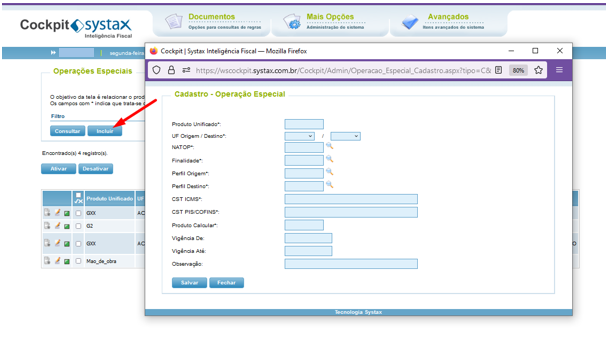
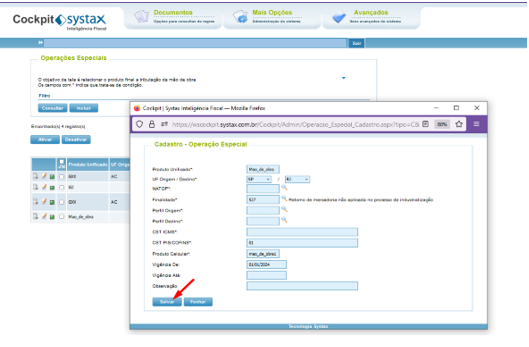
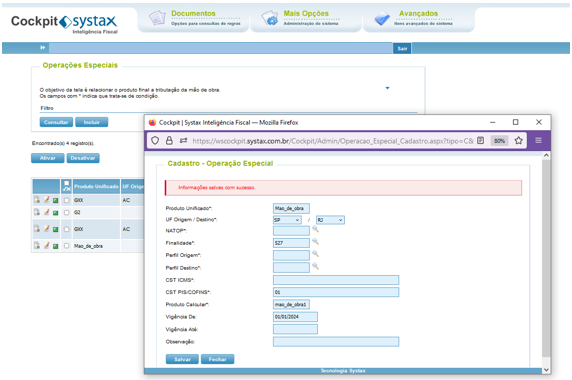
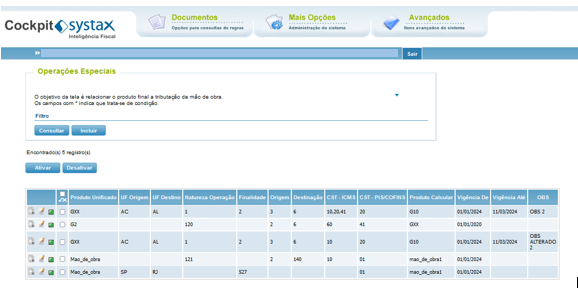
- Edição de um registro existente:
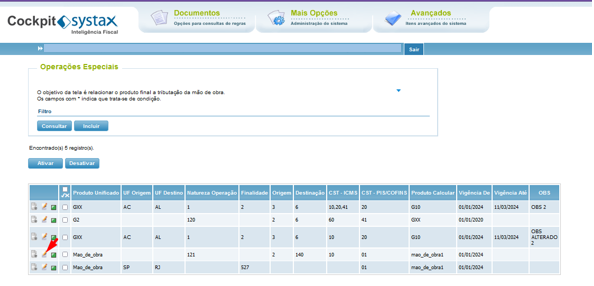
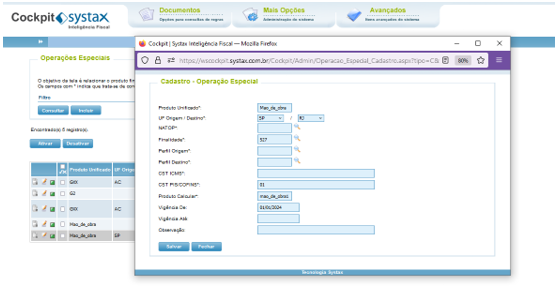

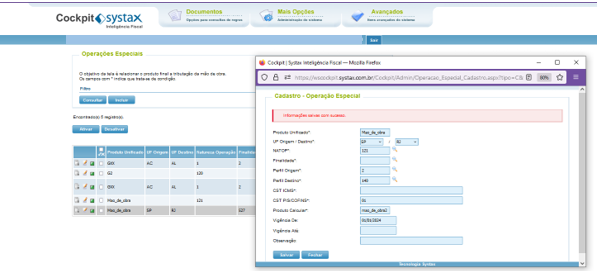
- Visualização do histórico:


No exemplo abaixo, criamos a linha 2 onde incluímos o “produto unificado” e o “produto para calcular”:
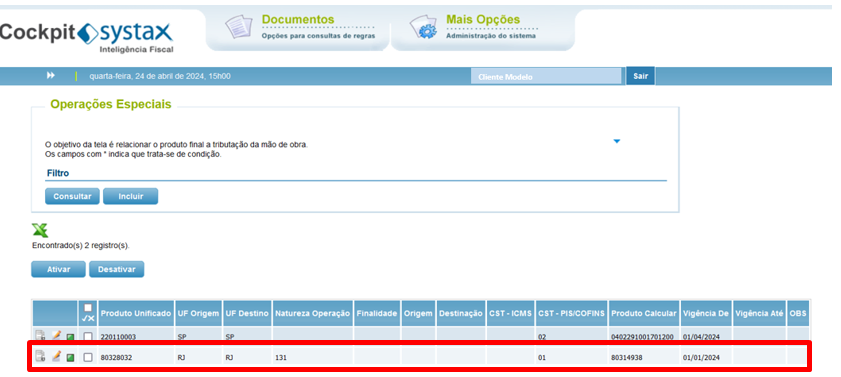
Enviamos as informações na chamada do TaaS para o motor de cálculo receber as informações necessárias para fazer a busca na tabela e executar as trocas:
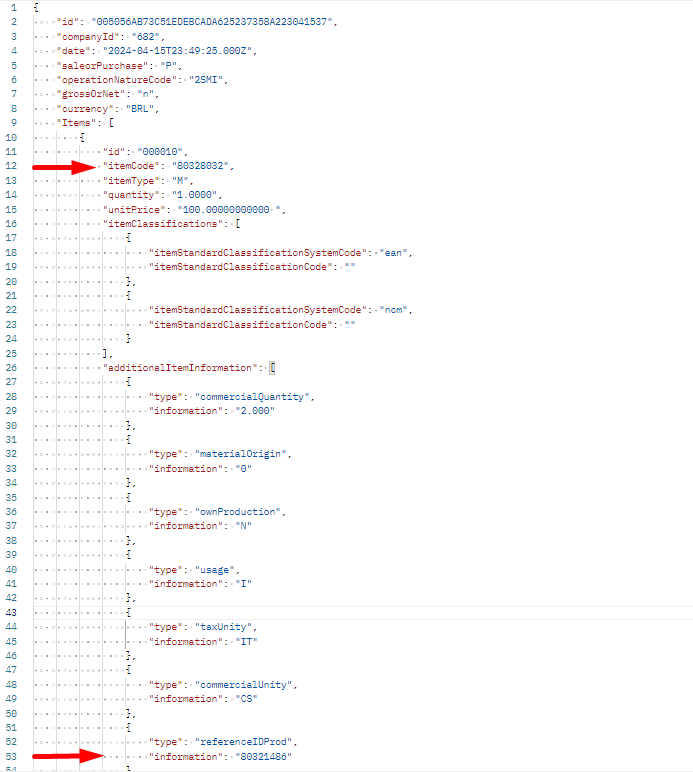
No retorno do TaaS, utilizamos a regra do “produto para calcular” na execução do cálculo e a informação retorna na linha do “genericInfo”, evidenciando o produto utilizado no cálculo.
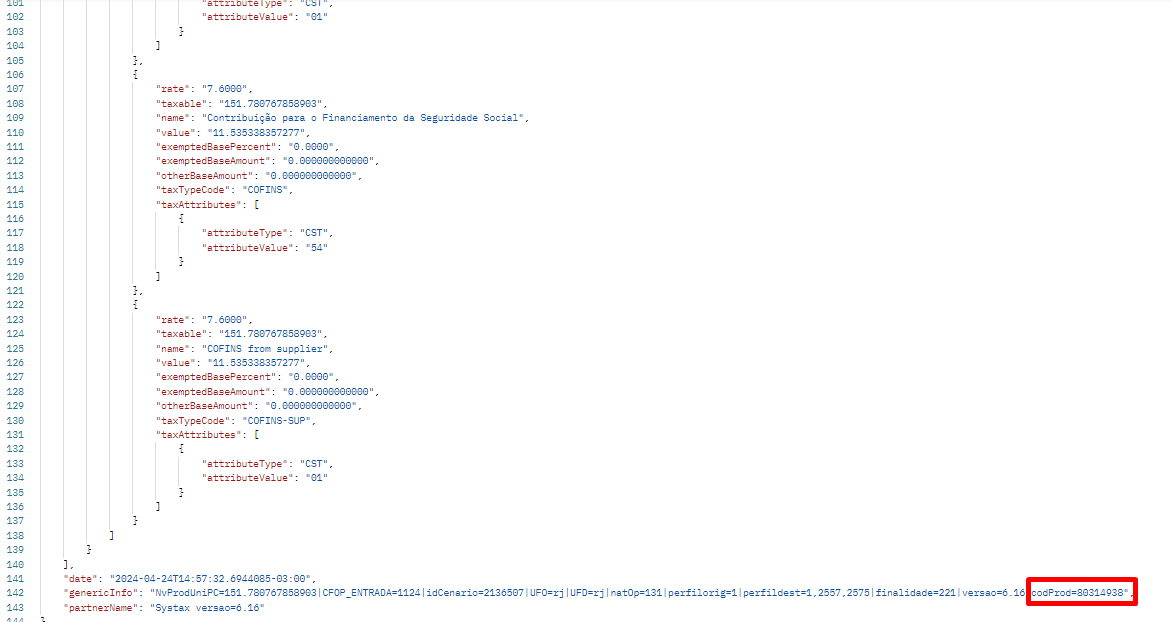
O preenchimento da tela de “Operações Especiais” tem algumas condições que deverão ser observadas:
Special Operations
By Fernanda Almeida
To meet the needs of customers regarding the taxation of Pis and Cofins of the labor applied in industrialization, we created the “Special Operations” screen.
The information on this screen allows the customer to send a single product in the TaaS request, the engine then makes the exchange and returns the result of the calculation considering the “product to calculate”, thus, in the outcome of the computation, the unified product accompanies the taxation of Pis and Cofins of the industrialized product.
The development of this routine consists of the following flow:
The routine is available in the following Cockpit menu:
The functionality allows the user to include a new record, as well as its editing and viewing of the history:
- Inclusion of a new record:
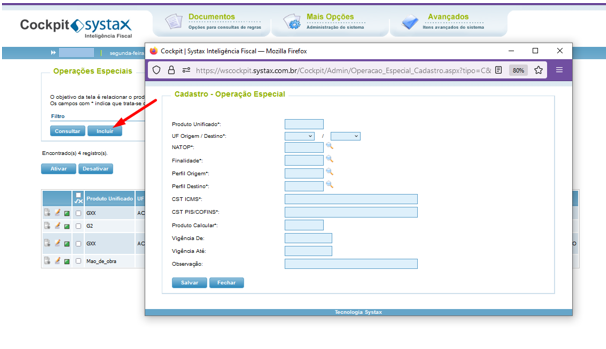
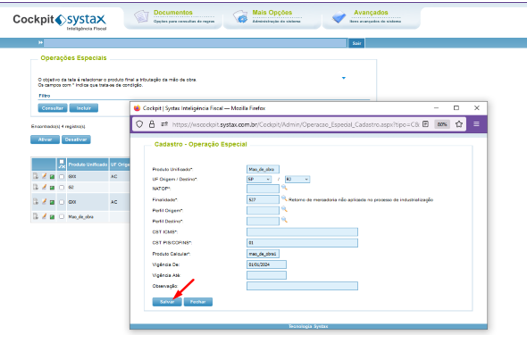
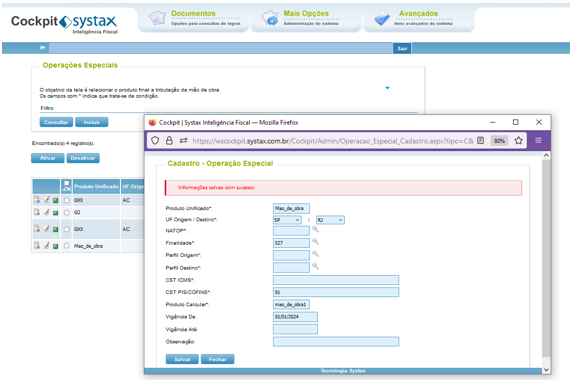
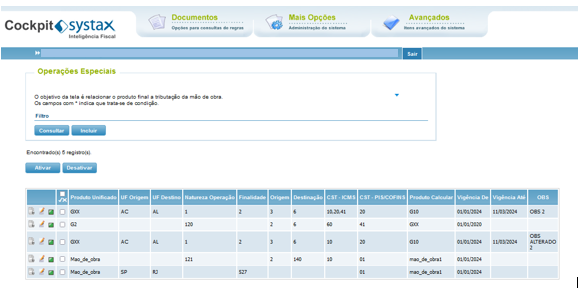
- Editing of an existing record:
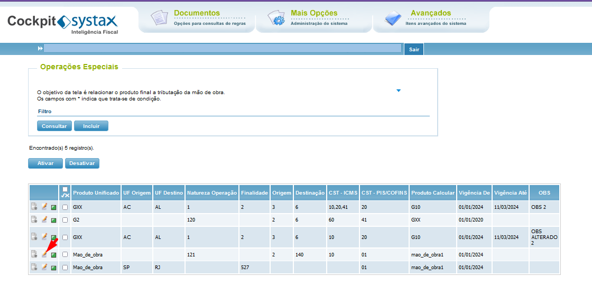
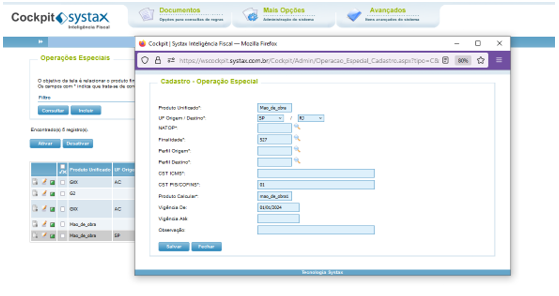
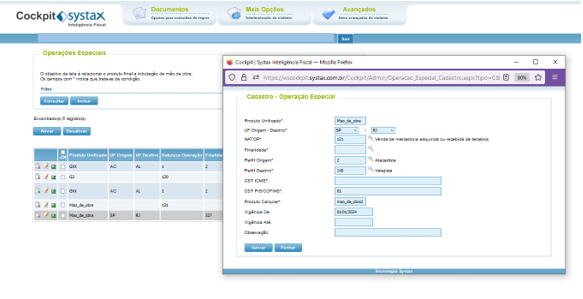

- History view
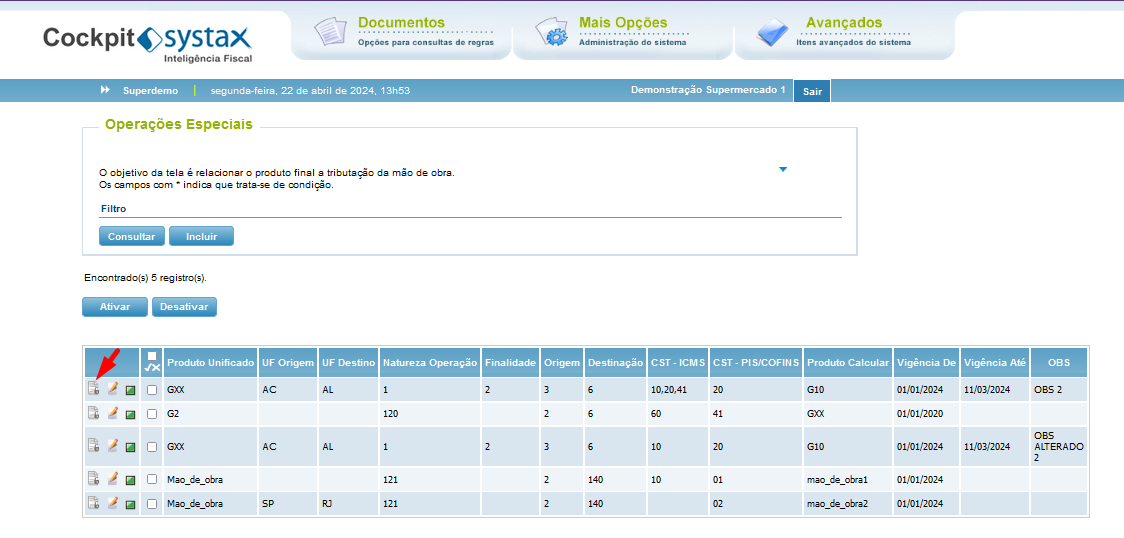

In the example below, we created line 2 where the “unified product” and the “product to calculate” were included:
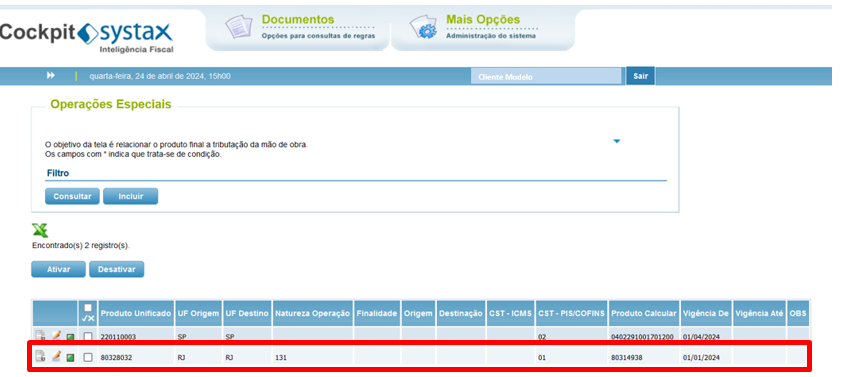
We send the information in the TaaS call to the calculator, to receive the necessary information to search the table and execute the exchanges:
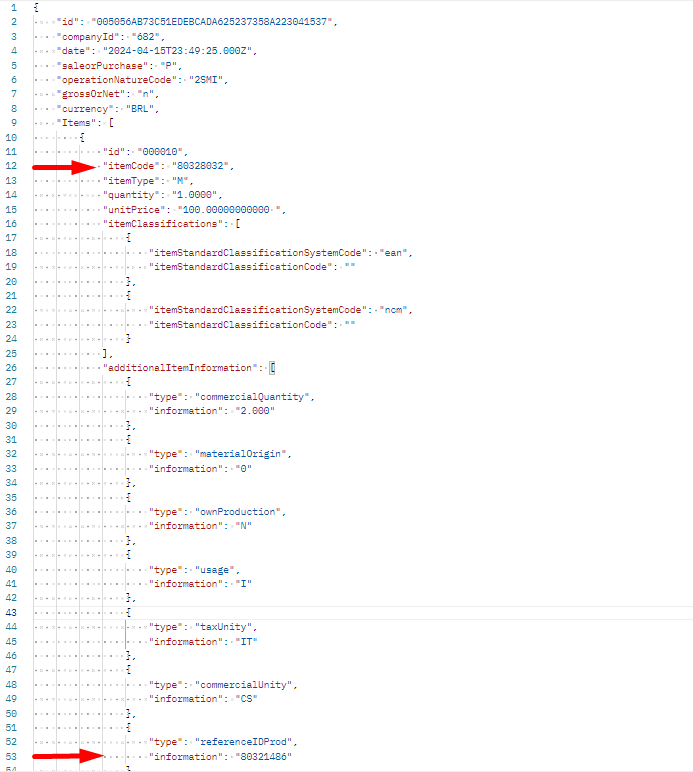
In the return of the TaaS, we use the “product to calculate” rule in the execution of the calculation and the information returns in the line of the “genericInfo”, highlighting the product used in the computation.
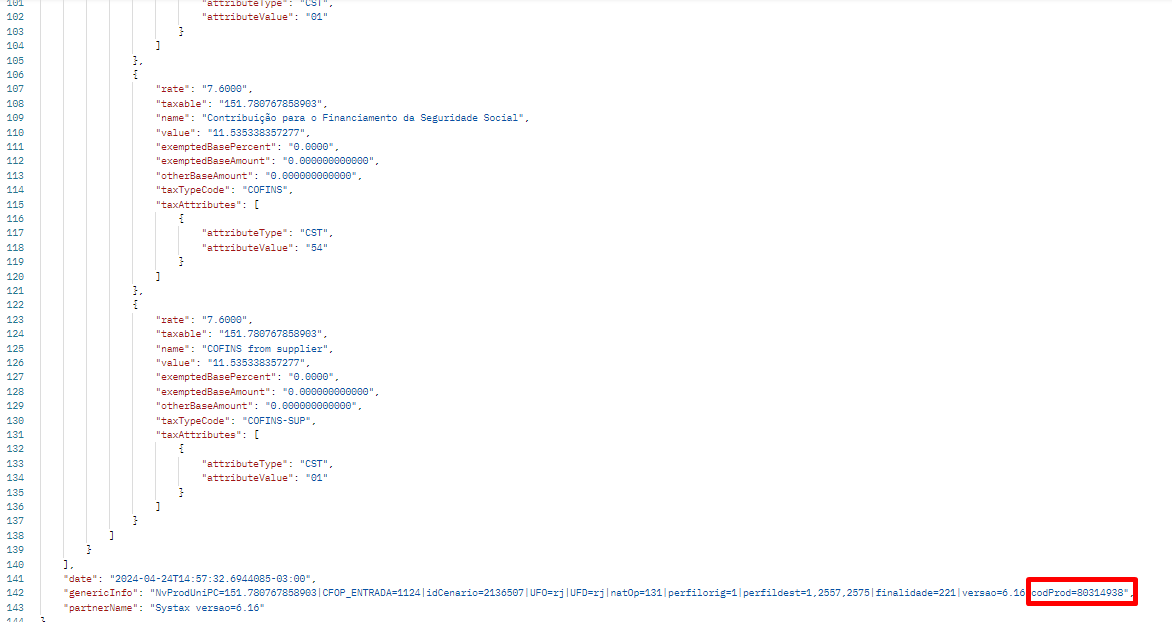
The filling of the “Special Operations” screen has some conditions that should be observed:
| Versão do documento: 60 | Publicação: 5/3/2024 6 |